One of the great things about indie game development is the freedom to experiment, or to revive and build on stylistic choices that are well-loved but don’t fit in with modern big-budget titles. When we designed Demon Crush, we came up with a few ideals that we wanted to strive for: Constant action, and storytelling without words. This might sound pretty simple, at least for an action game, but Demon Crush has a complicated story of conquest and betrayal, and a combat system with hidden intricacies. Explaining all of this to the player without saying a single word was an interesting challenge.
We were inspired by the effective, but minimalist, storytelling techniques of classic game series like Metroid and Mega Man. We were also drawn to the simple visual style of the NES Ninja Gaiden trilogy. In Demon Crush, we tell our story in three ways:
Brief, wordless cutscenes express plot points and give the player context for the overall arc of the story and characters. They also give the player a moment to relax, but are short enough that players won’t quite have time to cool off before they’re back in the fight.
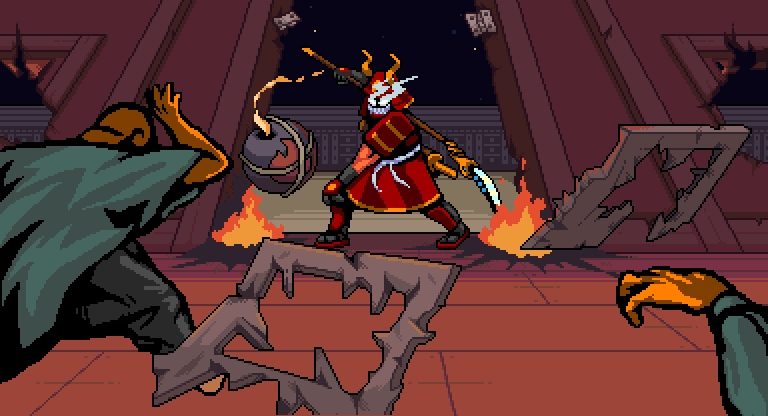
Visual cues take the player through most of the game. These can be enemies pouring out of (or allies heading toward) an area that the player should go, lighting or object lines that lead the player’s eye, motion, camera placement, or sound. In this scene, the wooden serpent carving sticks out from a high wall, with a bright tree and an upward-drifting camera to guide the player’s eye. The carving pulses with a gold outline, a signal that is repeated throughout the game to indicate targets for the player’s chain.
However, sometimes this isn’t enough. First-time players may not realize that they have the ability to chain-grapple, or that they can press “Up + B” to throw it upward. After a few seconds, a ghostly image of Kenzo appears, along with a controller display, to help out. This is especially right after acquiring new items or powers, or right before facing enemies that have a specific weakness that the player might not be aware of.
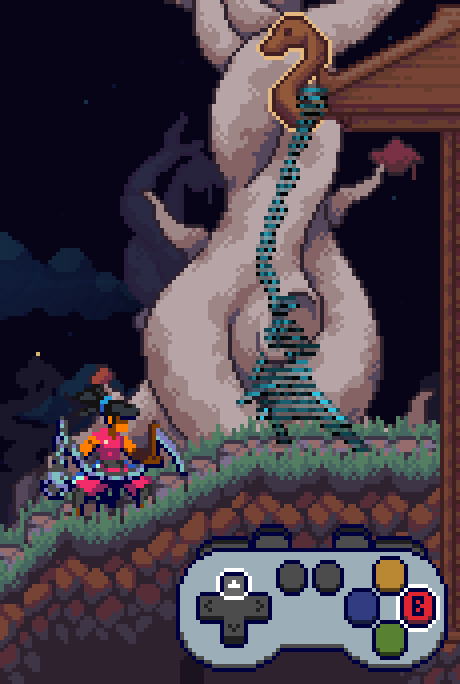
Finally, the game tells some of our story through background elements. This mode of passive storytelling gives players information about the world without stopping the game or telling them directly.
For example, the lower portions of Gochima village, nearer to the forest and swamps in the valley, are inhabited mostly by the farmers and fishers of the village. These are people of humble means, and their small, plain-looking homes frequently have a front area that the family uses as a market.
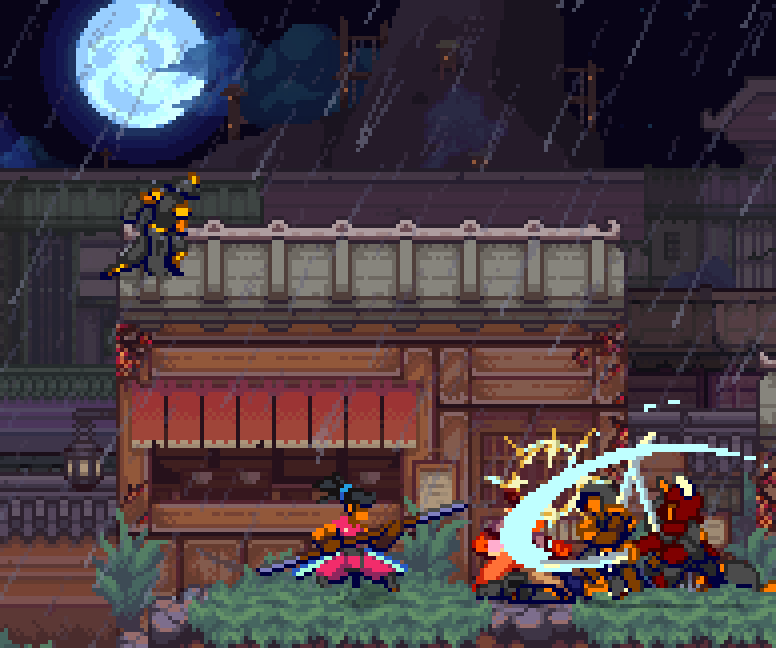
By contrast, homes in upper Gochima tend to be multi-story mansions with vibrant colors. Their interiors consist of tea rooms and parlors, and have large windows and high ceilings. Even the clothing of the villagers who fight for their survival against the invading warriors differs as you move upward, speaking to the hierarchy of village society.
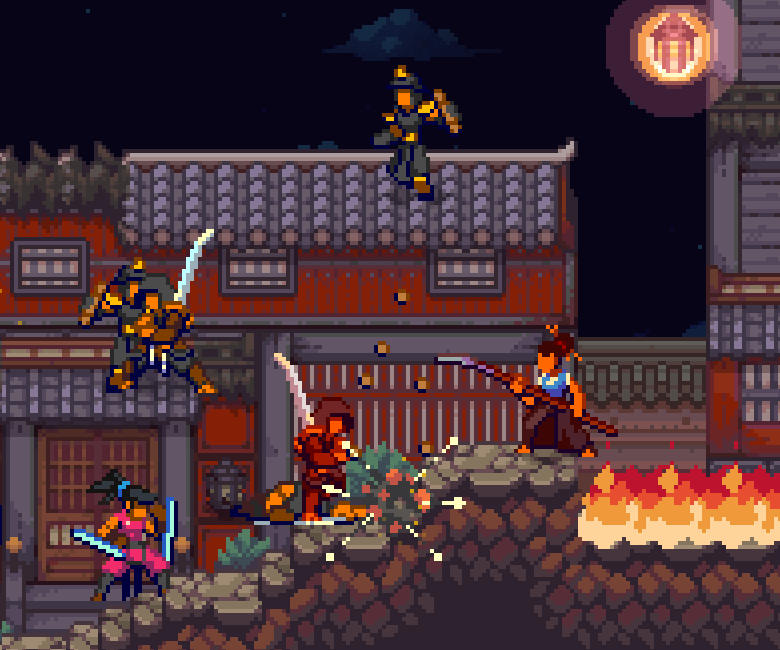
With these methods, we can hint at a complicated story for players who want to delve into the hidden lore of our world. But at the same time, we can subtly create a subconscious sense of the world, without stopping the action, for those who just want to experience the game’s combat and platforming. Although many games may seem like they don’t need a lot of lore, having robust and deliberate narrative elements informs many aspects of development, and ultimately affects the user in subtle, often subconscious ways. It informs artists when they create characters, objects, and background scenery. It informs composers when they write music. It informs level designers when they shape the terrain and architecture of your world. And in the end, it affects players, even if they don’t realize it. Sometimes the most effective methods are the ones you don’t notice!

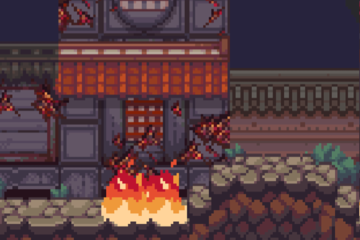
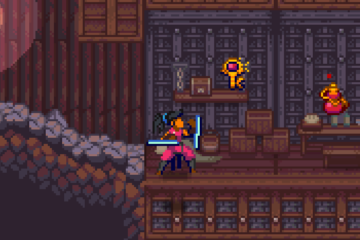
0 Comments